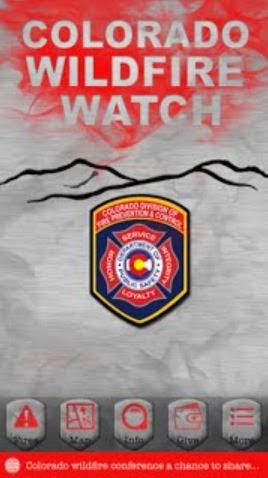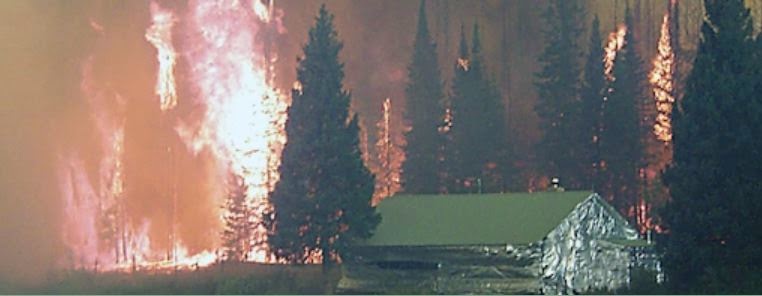Colorado has already seen several small wildfires this spring, and the dry weather suggests that wildfires may be a problem as spring moves into summer. Numerous Colorado state agencies have provided helpful websites and resources to help property owners, first responders, decision makers, and others prepare for what could be an active wildfire season.
The Colorado Division of Insurance has produced several resources for homeowners living in potential wildfire zones. Their website Take 5…To Prepare for Wildfire Season encourages homeowners to prepare by checking their homeowners’ insurance policy; clear dead leaves, wood, and pine needles away from property; prepare a home inventory; and make sure you are up-to-date on any defensible space and mitigation requirements. The site also offers tools and apps to help with the preparation of a home inventory — don’t wait until your home is gone to try to remember what was in it!
The Colorado State Forest Service has a wealth of information on their website regarding wildfire preparations. The Colorado Wildfire Risk Assessment Portal is designed both for property owners and for emergency professionals. By selecting their user type, users can find resources on Colorado wildland fires and the risks of the wildland-urban interface. Property owners can use the website to help determine if they are at risk, while emergency management professionals and local governments can register to receive help with wildfire planning. Also, the “support” section of the website provides links to valuable resources including fact sheets for wildfire protection planning, “firewise” construction, and protecting your home from wildfire. The site also provides samples and templates to help communities create their own wildfire plans. Additional resources can be found on the Colorado State Forest Service’s Publications webpage.
The Colorado Division of Homeland Security and Emergency Management (DHSEM), a unit of the Colorado Department of Public Safety, provides valuable public information on disasters and emergencies, including wildfires. DHSEM publishes a blog, www.coemergency.com, which is also updated through Facebook and Twitter to provide the most up-to-date information. Also be sure to visit their website’s preparedness page for information on community planning, grants, training exercises, critical infrastructure protection, and more.
 Also housed within the Department of Public Safety is the Division of Fire Prevention and Control, which is the main statewide wildfire planning agency; they also deal with fire codes and regulations for construction and for public buildings such as schools and hospitals. Their Wildland Fire Management page includes such resources as the state wildfire plans; information on prescribed burning; information on firefighting aircraft; and a new Colorado Wildfire Watch app, available for Apple and Android.
Also housed within the Department of Public Safety is the Division of Fire Prevention and Control, which is the main statewide wildfire planning agency; they also deal with fire codes and regulations for construction and for public buildings such as schools and hospitals. Their Wildland Fire Management page includes such resources as the state wildfire plans; information on prescribed burning; information on firefighting aircraft; and a new Colorado Wildfire Watch app, available for Apple and Android.
As we saw with the Lower North Fork Fire, controlled burns can quickly become out-of-control if proper precautions are not taken. In addition to requiring smoke permits for prescribed burns, the Colorado Department of Public Health and Environment (CDPHE) also offers preparedness information for the day of the burn, including how to determine if the conditions are right for a burn, and how to monitor the burn and smoke. CDPHE’s website also includes tips on how to protect your health from wood smoke, and how to check the current air quality in event of wildfire.
The Governor and Legislature have also set up several committees and task forces for dealing with wildfire issues. The Governor established the Task Force on Wildfire Insurance and Forest Health in 2013, while the General Assembly’s Wildfire Matters Review Committee met over the summer of 2014 to discuss legislation needed to help prepare for and combat wildfires.
Lastly, be sure and visit our library’s web catalog to search for additional preparedness resources as well as reports on past fires.

- How to Spot the Differences Between Eagles and Hawks - August 16, 2021
- How Transportation Projects Help Tell the Story of Colorado’s Past - August 9, 2021
- Time Machine Tuesday: The Night the Castlewood Canyon Dam Gave Way - August 3, 2021